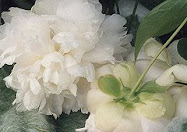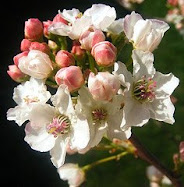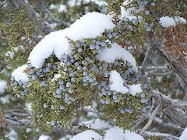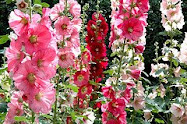 July is the month when a legal guardian or conservator really ought to accompany me on trips to the garden nursery, ostensibly to restock compost and mulch supplies, and deer repellent (which must be restocked with great frequency in northern Michigan gardens). Would that I could make it in and out of the nursery with purchases only of core gardening supplies. I cannot.
July is the month when a legal guardian or conservator really ought to accompany me on trips to the garden nursery, ostensibly to restock compost and mulch supplies, and deer repellent (which must be restocked with great frequency in northern Michigan gardens). Would that I could make it in and out of the nursery with purchases only of core gardening supplies. I cannot.In any season, my instinctual response to entering a garden shop is akin to that of a child in an old-fashioned penny candy store, where peppermint sticks and licorice whips, hot-pepper gumballs, slo-poke all-day suckers, sophisticated candy cigarettes, love-bead candy necklaces, ruby red wax lips with soda pop filling, sour lemon drops and other delectables line the shelves in big glass jars. Substitute for the candies arrays of snapdragons, lillies, yarrow, dianthus pinks, convulvulus, and so forth ad infinitum, and essentially I want one of those, and those, and those – oh, what the dickens, just one of everything! Quicker than a skinny minute, I can divest myself of the entire contents of my wallet on plant purchases that, while infatuating, often fall short of being wise.
July is not the best month to buy potted plants. Many will have become root-bound and exhausted from being stuck in pots for a couple of months, many already will have peaked in blooming. It's too early for the penny-wise benefits of end-of-summer price mark-downs. It is the month, though, when the gardener is perhaps most seriously tempted to splurge, because it's when vacancies in the garden plot become most apparent. The fulsomeness of the spring-flowering bulbs is spent, and the high summer season of flowering has reached whatever apex it is likely to attain this year, thus laying bare to the discerning eye whatever gaps, gaffes and failures there may be in the beds and borders.
However large, mature and resilient the garden output may be, it is those disappointing gaps the gardener somewhat obsessively tends to focus upon. The bee balm may have grown to five feet this year, the lillies and iris may have generously multiplied their numbers, the reliable Russian sage has come back for another vigorous outing. But still, last year's alyssum didn't re-seed itself, the columbines returned only thinly and flagging, the limerock coreopsis and several chrysanthemums seem to have disappeared altogether. In the land of Michigan's punishing winters, on a sandy, wind-whipped, lakeshore plot, with nightly visits from forever foraging deer, every summer dishearteningly reveals fatalities and terminal wounds among the garden's rank and file. The garden shop offers so many tantalizing options for potential new plant recruits, so many dreams of more, bigger, fuller, better.
July is the month to keep firmly in mind that nature laughs when the gardener makes plans. And it's the time to look at the garden in its entirety, seeing and appreciating it whole, not just zeroing in on the sore spots. July is the month to revel in how far the garden has come, to touch, smell and really see the successes, decked in their best splendor, to hear the rustle and bustle of dozens of bees in the lavender spires, the back and forth soft tympany of summer breezes at play in the tall quaking aspen.
An excellent means of elevating the sensual enjoyment of the summer garden, and minimizing its flaws, is to sit right down upon the ground in its midst. This angle of repose puts the gardener right at eye level with the garden's best display of bloom and architecture. Seated on the warm earth, the line of sight goes not downward from above, but outward to the surrounding company. To sit right among the plants, shoulder to shoulder, side by side with the flower heads, branches and leafy torsos of the garden is like drawing up a chair at a banqueting table with a large, colorful, engrossing congerie of friends in every direction you look. Remember the feeling of complete, bone-deep contentment you got as a child, when laying in a grassy meadow on a sunny summer day? It's like that. The senses will be filled, the blank spaces barely noticed.
The gardener will still, doubtless, commit the sins of lust and covetousness at the nursery. Plant and garden love is an incurable affliction, once it works its wiles upon the heart. But looking at the garden from a seat at its summer-laden board could help instill a little more restraint and wise choosing into the inevitable purchasing process. One can but hope.










